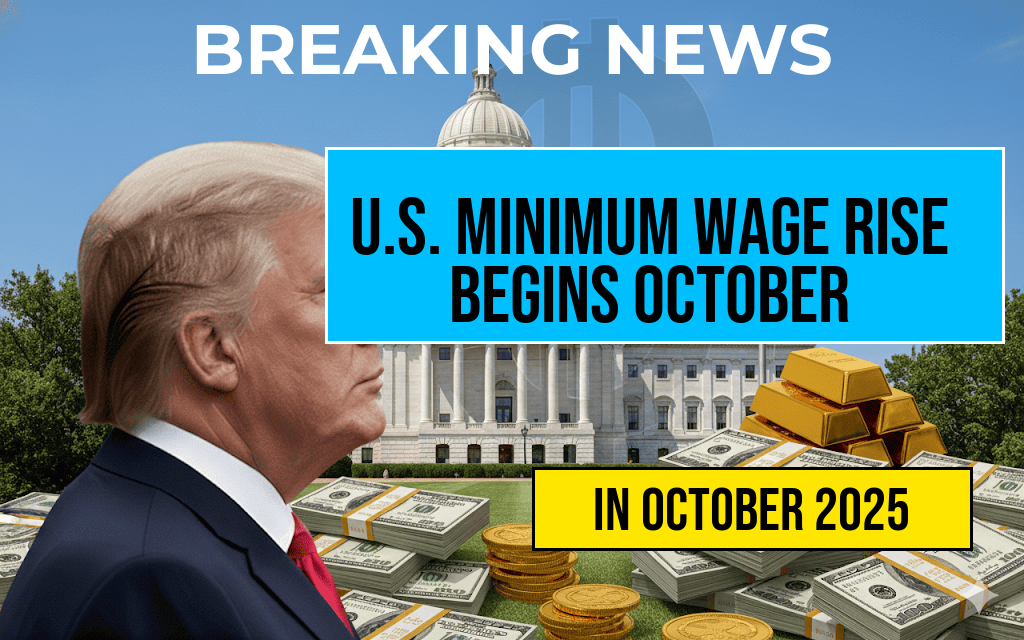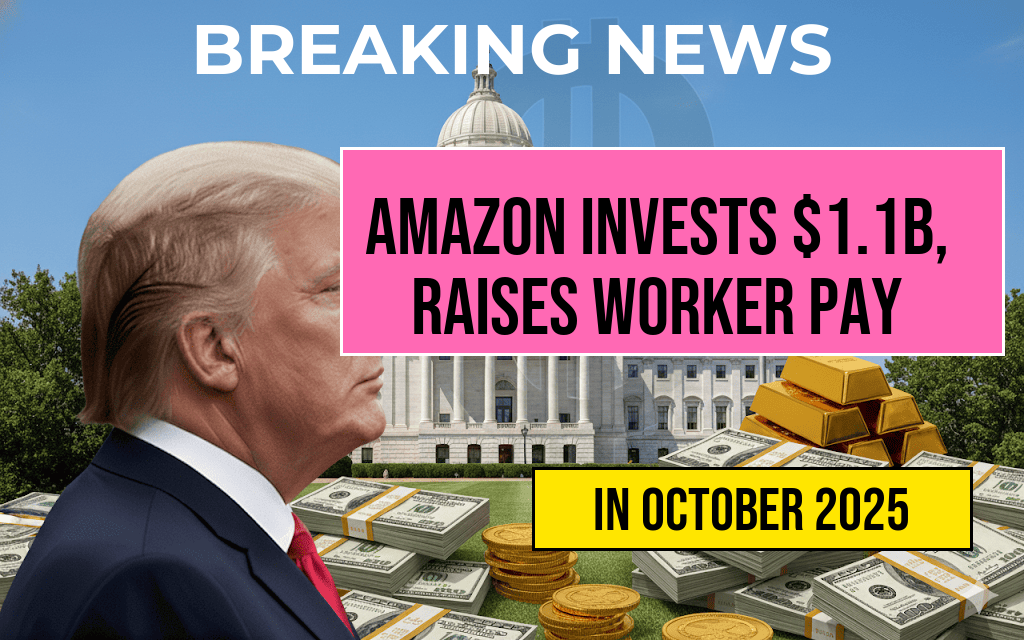The U.S. Department of Labor has officially announced that the federal minimum wage will increase effective October 4, 2025. This adjustment reflects ongoing efforts to keep pace with inflation and ensure fair compensation for workers across various industries. The new rates will impact millions of employees nationwide, with the change set to influence wage standards in both the private and public sectors. Employers are advised to review their payroll systems and update employee compensation accordingly to remain compliant with federal regulations. The adjustment also signals continued debate over wage policies amid economic shifts, with advocates emphasizing the benefits of increased earnings for low-wage workers, while critics express concerns over potential impacts on employment and business costs.
Details of the 2025 Federal Minimum Wage Increase
What the New Rates Will Be
| Region | Current Minimum Wage (2024) | New Minimum Wage (2025) |
|---|---|---|
| Contiguous States | $7.25 | $8.50 |
| Federal Contractors | $10.50 | $12.00 |
| Puerto Rico | $7.25 | $8.00 |
The federal minimum wage will see an increase from $7.25 to $8.50 for most workers, marking a significant adjustment after years of stagnation. For federal contractors, the minimum pay will rise from $10.50 to $12.00. These changes aim to bolster earnings for vulnerable workers and align wage standards with current economic conditions.
States and Localities with Higher Wages
Many states and cities have their own minimum wage laws that exceed the federal baseline. For example, California’s minimum wage will rise to $15.50 per hour by 2025, while New York’s rate is scheduled to reach $16.00. Employers in jurisdictions with higher wages are obligated to adhere to those standards, which often surpass the federal minimum. The upcoming federal increase does not alter these regional wage laws but sets a new baseline for federal contractors and applicable sectors.
Implications for Employers and Employees
Employer Compliance and Payroll Adjustments
Businesses across the country are preparing to adjust their payroll systems to accommodate the new wage rates. Employers of federal contractors and entities operating in states with lower minimum wages will need to update their pay scales, revise employee contracts, and ensure payroll accuracy. Human resources departments are reviewing policies to ensure compliance and avoid penalties. Smaller businesses might face increased labor costs, prompting some to evaluate pricing strategies or staffing levels.
Impact on Workers and the Economy
For employees earning near the minimum wage, the increase promises immediate financial relief and improved purchasing power. Economists suggest that higher wages could stimulate consumer spending, potentially supporting local economies. However, some analysts caution that increased labor costs might lead to hiring slowdowns or reduced hours in certain industries, such as retail and hospitality. Labor advocates argue that the rise is a necessary step toward addressing income inequality, while critics warn of possible inflationary pressures.
Historical Context and Future Outlook
The recent federal minimum wage adjustments follow a series of incremental increases over the past decade. The last significant hike occurred in 2020, when the rate was raised from $7.25 to $8.00, then gradually increased to $7.25 in 2021 and stayed stagnant until now. The Biden administration has emphasized the importance of a living wage, citing research from organizations like the Wikipedia that links wage increases to reduced poverty levels. Although some states and localities have moved to higher minimum wages, the federal adjustment signals a uniform effort to improve worker earnings nationally.
Looking Ahead
As economic conditions evolve, policymakers and industry leaders will monitor the impact of higher minimum wages on employment figures and overall economic growth. Discussions about future increases are already underway, with some advocates pushing for a nationwide minimum wage of $15 per hour. The upcoming change on October 4, 2025, sets a precedent for continued wage policies aimed at reducing income disparities and promoting economic stability.
For more details on minimum wage laws and updates, visit U.S. Department of Labor and reputable economic analysis sources such as Forbes.
Frequently Asked Questions
What is the new minimum wage effective October 4, 2025?
The U.S. minimum wage will increase starting October 4, 2025, with updated hourly pay rates announced across various states and regions.
Which states or regions are affected by the minimum wage increase?
The minimum wage increase applies nationwide, with specific pay rate adjustments announced for individual states and regions based on local regulations and economic factors.
How much will the hourly pay rates increase?
The hourly wages will see varying increases depending on the state or locality, with some areas experiencing a significant rise to meet new federal and state standards.
Will this increase affect employers’ payroll costs?
Yes, the increase in minimum wage is expected to impact employers’ payroll expenses, potentially leading to adjustments in pricing, staffing, or operational costs.
How can employees find out their new minimum wage rates?
Employees should check official state or local government websites or consult their employers’ HR departments to confirm their new hourly pay rates effective from October 4, 2025.






